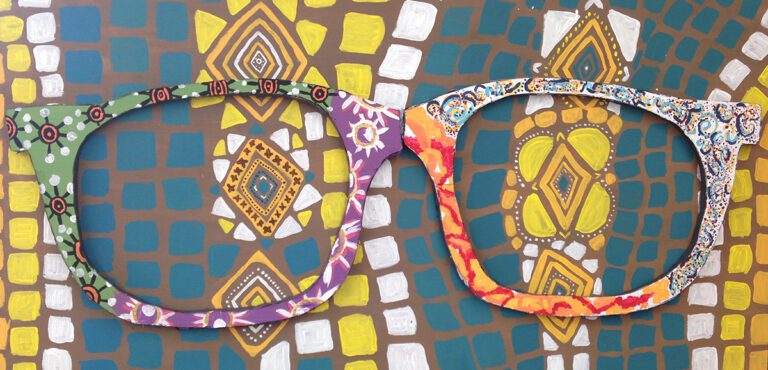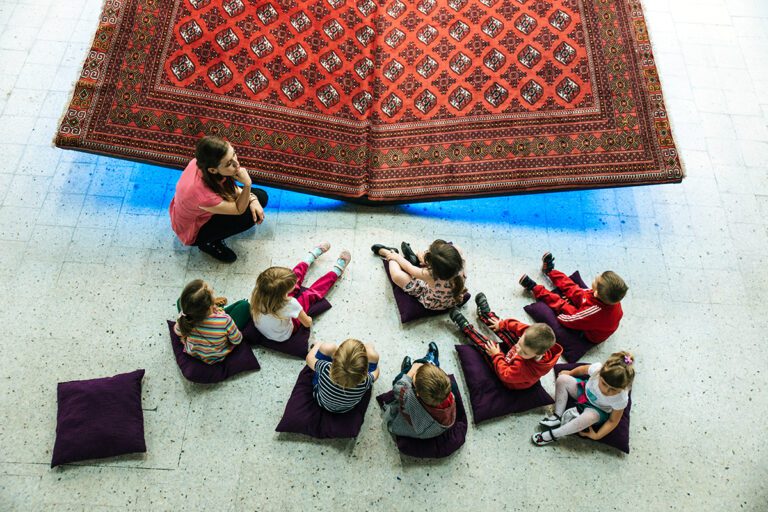Have you ever held a critique and noticed some students receive no feedback? Are you looking for a way every student can receive useful feedback from both you and their peers?
Here is a critique method where students and the instructor provide written feedback to everyone: The Gallery Walk.
It makes perfect sense to model a critique off of a gallery walk because, after all, the gallery walk is a reference to seeing art! The goal of this critiquing method is for students to create their own focus questions and to receive lots of feedback. Peers and the instructor provide constructive, focused, and anonymous feedback. Gallery walks can generate feedback at any stage of the process, from rough sketches to finished pieces. The execution of the gallery walk comes down to three parts: generating questions, setting up the scene, and implementing.
Generating Questions
First, students need to have a quality focus question. Questions may differ depending on the stage of the process the critique is occurring. It is crucial for many students to see several example questions before choosing their own. Some questions can lead to a direct change in the art piece. Some questions might have implications for future work. Strong focus questions do not have “yes” or “no” answers.
Here are some possible focus questions:
- What do you think is the message of my piece?
- What does the symbolism say about me?
- What do you feel is the biggest strength in my composition?
- How could I use my negative space differently?
- What do you think I can improve most for next time?
When discussing focus questions with students, a couple of different scenarios may arise. Some students might not choose a question and remain stuck. For students who do not gravitate towards any particular focus, ask them to use “What ideas or feedback do you have for me?” Other students might want to ask several questions. Once a student asks more than two questions, the feedback becomes too shallow. While one question is ideal, limit students to a two-question maximum for quality feedback.
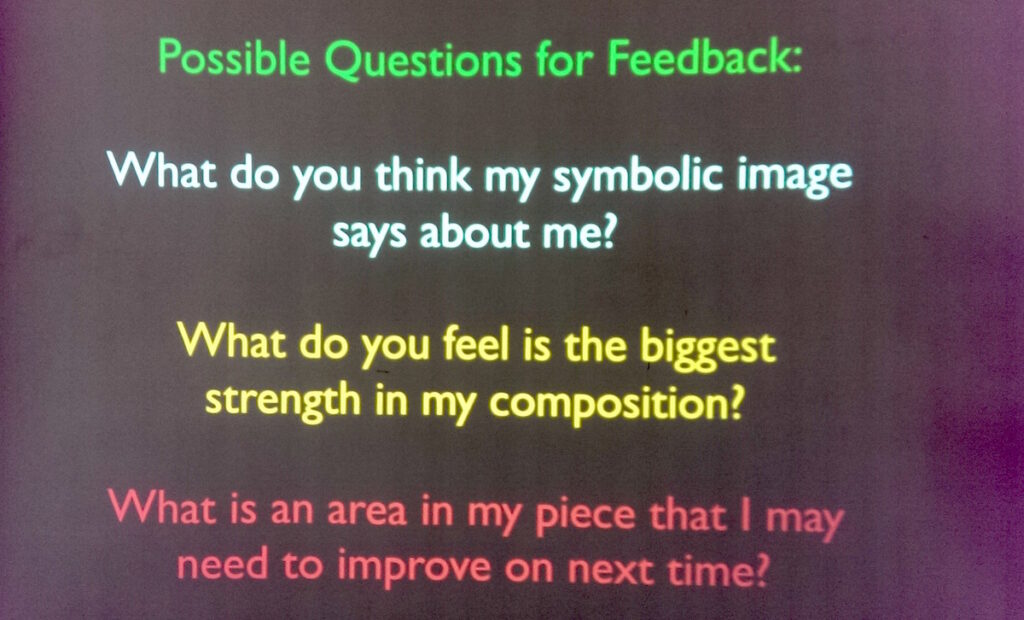
Setting Up the Scene
Next, students need to write their questions for others to see and respond to. One way to do this is to give students an index card, a piece of tape, and one sheet of binder paper. Have students write their focus question on the index card and tape the index card to the top of the binder paper. Feedback will be written on the binder paper by peers and the instructor. Place the index card and binder paper beside the art that is up for analysis. At this stage, all other materials should be off students’ desks.
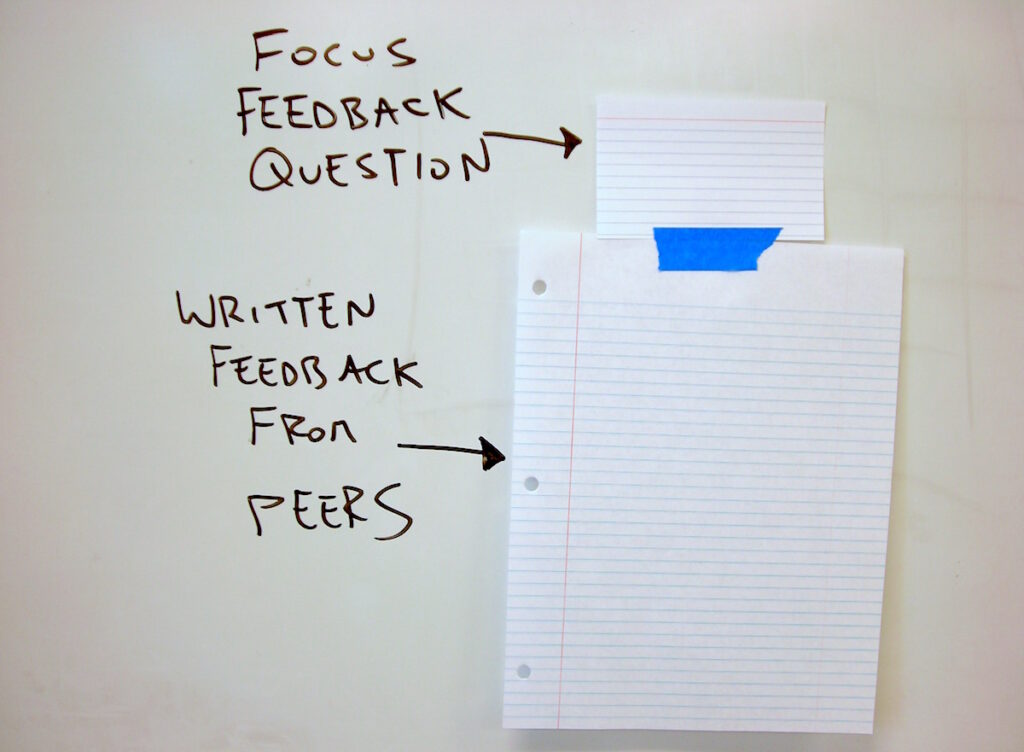
Students require some clear instructions before being released to walk around and write to each other. The number one thing to address is the positive purpose of the critique. The goal is to make each other better, not to make people feel bad. Students are not out to insult each other. Make sure students know that they are not to make hurtful remarks or write anything off topic. Sometimes students will feel the need to write things that have nothing to do with the focus question or with art in general. Make sure students understand their job is to stay on point with their responses.
One last issue to address is the nature of the walk. Students might start strong and write great feedback for the first five minutes. Then, all of a sudden, a group forms in the back corner and engages in off-task conversation. Tell students that they have 10 minutes of writing time. If a cluster forms, encourage them to jump around to a less-populated table or piece and cycle back later. The goal is for students to write one comment for every student piece in the room.
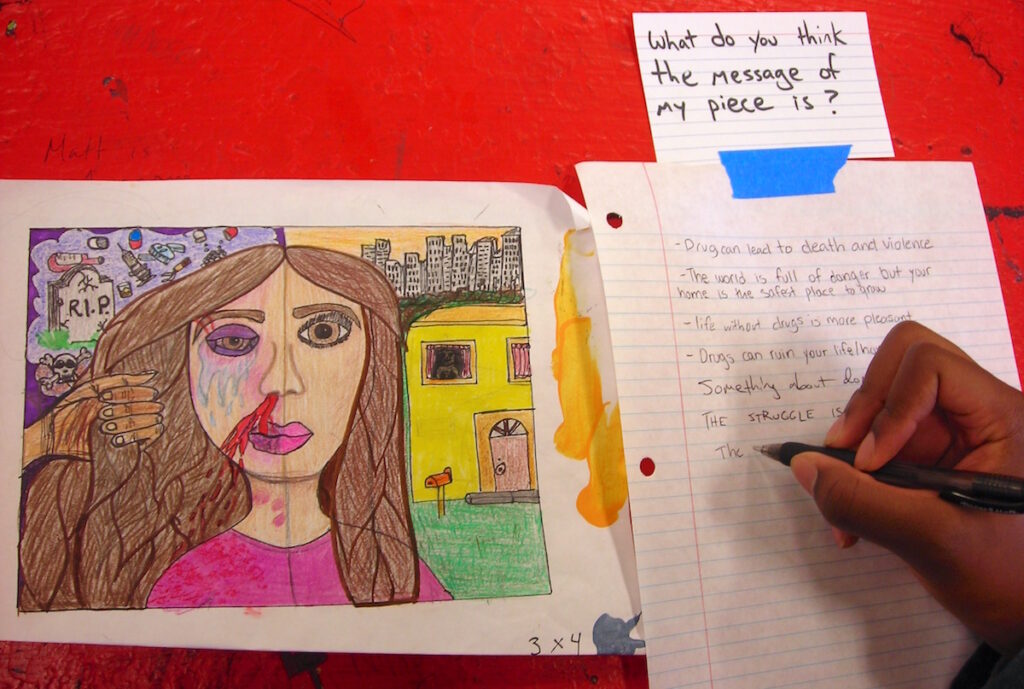
It also helps to remind students they are resources for each other. The art room is a collective of creative individuals who push, influence, and inspire one another. Genuine feedback is a gift and it helps everyone develop.
Implementing
Now that students are ready to give some quality feedback, it is time to start the walk! Music is a fantastic way to motivate students and keep them moving. Some calm, yet upbeat, melodies can help students get into the feedback groove.
As the instructor, it is essential to join in this activity with students. As you cycle from table to table, you are better able to notice the comments being offered. If anything comes up that needs to be addressed, you can stop the music and make sure the class is aware of something that needs to change. When students see the instructor participating in the same activity they are asked to engage in, it automatically raises the stakes. Sharing your ideas alongside students is a powerful experience.
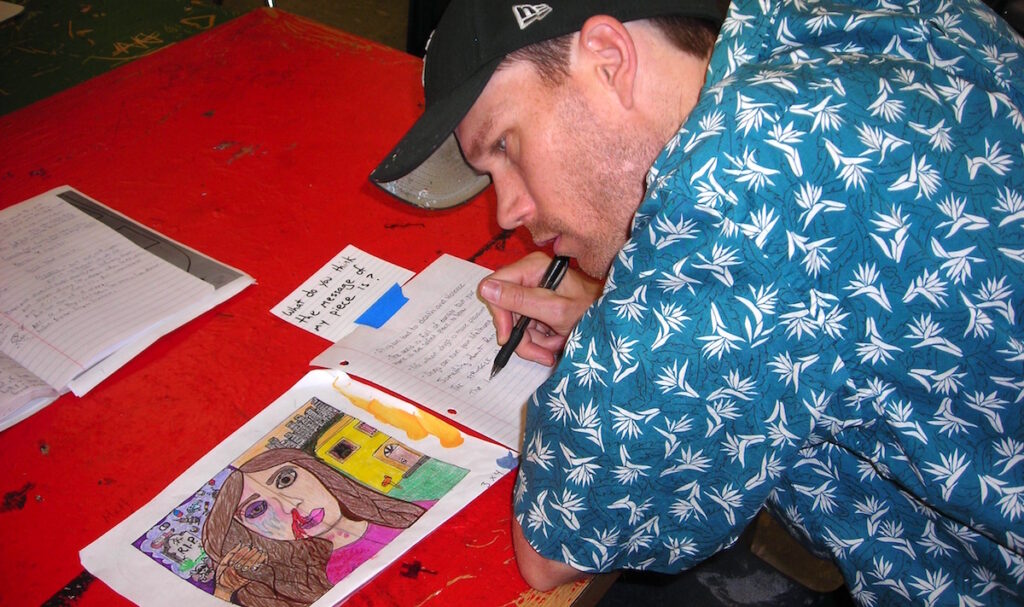
The length of the activity is important. After 10 minutes, students start to fatigue. In an ideal world, each student would receive feedback from every other student. In reality, this usually does not happen. If students receive feedback from half of the class, consider the gallery walk a success! One strategy is to stop the music about halfway through the allotted time, give students an update on where the least amount of feedback is, and ask them to concentrate on that area.
The gallery walk critiquing method is powerful. Students think a bit more deeply about what they want out of a critique through a focus question, and they participate much more willingly through anonymously written feedback. After the time is up, have students return to their seats. Ask them to read their feedback and listen to how quiet the room gets. Then have one or two students share some really good feedback they received. The more students practice this method, the better the feedback will become.
If you’re looking for even more unique assessment ideas, be sure to take a peek at AOEU’s Assessment in Art Education where participants walk away with a comprehensive toolkit full of authentic assessments to use in their classrooms.
What other critique styles are successful for you?
If you have used the gallery walk method before, describe your experience!
Magazine articles and podcasts are opinions of professional education contributors and do not necessarily represent the position of the Art of Education University (AOEU) or its academic offerings. Contributors use terms in the way they are most often talked about in the scope of their educational experiences.




